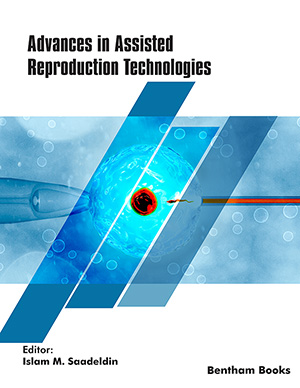Abstract
Background: Spider venom show abundant diversity in both peptides and proteins, which play essential roles in new drug development and agrochemistry. The venoms of Macrothele yani species have strong toxicity on the victims.
Objective: The purpose of this study is to comprehensively characterize the profile of venom proteins and peptides of spider Macrothele yani mainly inhabiting Yunnan province, China.
Methods: Using a combination of RNA sequencing of the venom glands and venom proteomics based on Liquid Chromatography-Electrospray Ionization-Tandem Mass Spectrometry (LC-ESI-MS/MS), we provide the first overview of the peptides and proteins synthesized from Macrothele yani.
Results: A total of 116 peptide sequences were analyzed, and 43 homologous proteins were matched, of which 38.10% were toxin proteins. High-throughput sequencing by the HiSeq-2000 (Illumina), followed by de novo assembly. As a result, 301,024 similar protein sequences were annotated in the available databases. A total of 68 toxins-related sequences were identified, comparative sequence analyses of these sequences indicated the presence of different types of enzymes and toxin- like genes, including Acetylcholinesterase, Hyaluronidase, cysteine-rich secretory proteins (CRISP), Astacin metalloprotease and other venom components.
Conclusion: The venom of a spider is a very abundant resource in nature. They were analyzed to determine their function in pathophysiology. Molecular templates with potential application value in medical and biological fields were obtained by classifying and characterizing the presumed components of spider venom of Macrothele yani, which laid a foundation for further study of the venom in the future.
Keywords: Spider venom, Macrothele yani, LC-ESI-MS/MS, proteomics, peptidomics, transcriptome.
[http://dx.doi.org/10.1002/ps.3872] [PMID: 25077959]
[http://dx.doi.org/10.1002/ps.5452] [PMID: 31025461]
[http://dx.doi.org/10.1007/s11030-006-9050-4] [PMID: 17096075]
[http://dx.doi.org/10.1371/journal.pone.0100682] [PMID: 24949878]
[http://dx.doi.org/10.1038/sdata.2014.23] [PMID: 25977780]
[http://dx.doi.org/10.3390/toxins5122488] [PMID: 24351713]
[PMID: 20571743]
[http://dx.doi.org/10.1096/fj.10-178848] [PMID: 21665957]
[http://dx.doi.org/10.1007/s10340-019-01143-3] [PMID: 31997983]
[http://dx.doi.org/10.1007/s00726-017-2425-2] [PMID: 28497266]
[http://dx.doi.org/10.1042/BJ20071123] [PMID: 18215128]
[http://dx.doi.org/10.2174/156652412803833535] [PMID: 23016590]
[http://dx.doi.org/10.3390/toxins11020095] [PMID: 30736335]
[http://dx.doi.org/10.1021/pr0700192] [PMID: 17567163]
[http://dx.doi.org/10.1016/j.toxicon.2019.09.021] [PMID: 31585140]
[http://dx.doi.org/10.1371/journal.pone.0172966] [PMID: 28306751]
[http://dx.doi.org/10.3390/toxins11020068] [PMID: 30682870]
[http://dx.doi.org/10.1016/j.jprot.2016.02.006] [PMID: 26883873]
[http://dx.doi.org/10.1016/j.jprot.2016.07.012] [PMID: 27436114]
[http://dx.doi.org/10.1586/14789450.5.5.731] [PMID: 18937563]
[http://dx.doi.org/10.1016/j.toxicon.2004.02.007] [PMID: 15066413]
[http://dx.doi.org/10.1016/j.cbd.2018.09.002] [PMID: 30290365]
[http://dx.doi.org/10.1007/s00726-015-2151-6] [PMID: 26803659]
[http://dx.doi.org/10.1039/C6MB00516K] [PMID: 27787525]
[http://dx.doi.org/10.1002/arch.21424] [PMID: 29024043]
[http://dx.doi.org/10.1016/j.toxicon.2004.05.012] [PMID: 15246762]
[http://dx.doi.org/10.1016/S0014-5793(03)00666-5] [PMID: 12860384]
[http://dx.doi.org/10.3390/toxins12080501] [PMID: 32764230]
[http://dx.doi.org/10.1186/1471-2229-9-79] [PMID: 19558640]
[http://dx.doi.org/10.1016/S0005-2728(00)00162-6] [PMID: 11004440]
[http://dx.doi.org/10.1074/jbc.M109.056028] [PMID: 20395300]
[http://dx.doi.org/10.1371/journal.pone.0151801] [PMID: 27007573]
[http://dx.doi.org/10.1007/BF00691734]
[http://dx.doi.org/10.1021/pr0500051] [PMID: 15952733]
[http://dx.doi.org/10.1021/pr300451g] [PMID: 22881118]
[http://dx.doi.org/10.1016/j.bbagen.2015.02.002] [PMID: 25665484]
[http://dx.doi.org/10.3390/toxins9090290] [PMID: 28927001]
[http://dx.doi.org/10.3389/fevo.2019.00085] [PMID: 31431897]
[http://dx.doi.org/10.3390/toxins10090359] [PMID: 30189638]
[http://dx.doi.org/10.2174/1570164617666191121112319]
[http://dx.doi.org/10.1016/j.fsi.2018.05.058] [PMID: 29859305]
[http://dx.doi.org/10.1371/journal.pone.0127883] [PMID: 26020943]
[http://dx.doi.org/10.3390/toxins11100611] [PMID: 31652611]
[http://dx.doi.org/10.1080/14712598.2017.1346606] [PMID: 28695745]
[http://dx.doi.org/10.2174/0929866525666180614114307] [PMID: 29921194]
[http://dx.doi.org/10.1590/1678-9199-jvatitd-2020-0125] [PMID: 34394208]



























